The American fast food chains we’ve loved and lost
With Carl’s Jr the latest American fast food chain to go up in flames down under, we look at the other US favourites that once set Melbourne’s tastebuds alight.
Victoria
Don't miss out on the headlines from Victoria. Followed categories will be added to My News.
The Carl’s Jr burger chain is the latest in a long line of American fast food giants to see its great Australian dream go up in flames.
While the likes of McDonald’s and KFC still flourish, Melbourne has loved and lost a long trail of failed American fast food restaurants.
In the 1970s, ’80s and ’90s, Melburnians were introduced to a whole new culinary world as the fast food and dine-in restaurant industry boomed.
It was an exciting era of American-style diners, catchy TV jingles, family-friendly dining, bouncy waitstaff, all-you-can-eat buffets and an array of food choices that had never been seen before.
Many new homegrown chains emerged too – some lasted, some didn’t.
Here are some of the American chains we remember most fondly.
Sizzler
The first Sizzler in Australia opened in Brisbane in 1985, but the chain really took off in Australia in the 1990s.
It spread rapidly across Melbourne’s suburbs, offering cheap, fast food, but not “fast food”.
Sizzlers was famous for its all-you-can-eat salad, pasta and desserts, and steak, seafood and chicken could be served to your table.
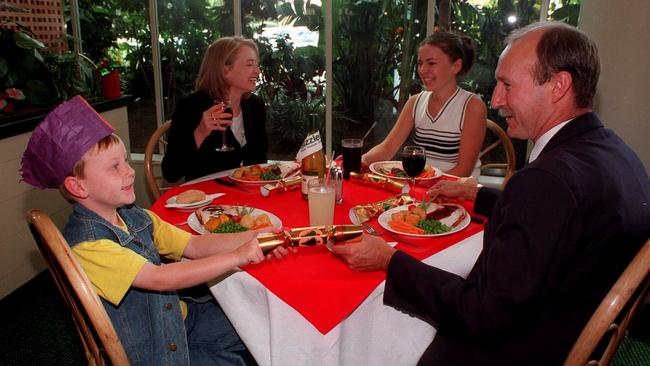
The extensive salad bar was a novelty in that era.
But the one menu item people still rave about today is Sizzler’s signature cheese toast, made by frying thick white bread slathered in butter and parmesan cheese. Yum!
Sizzler’s TV ads were almost as cheesy.
In 1991, Herald Sun food reviewer Simon Plant noted you could get soup, main course, salad, pasta, dessert and a glass of wine for $17.75.
As for the decor, he noted: “Airport terminal-style with floor-to-ceiling windows and a jungle of fake hanging basket greenery”.
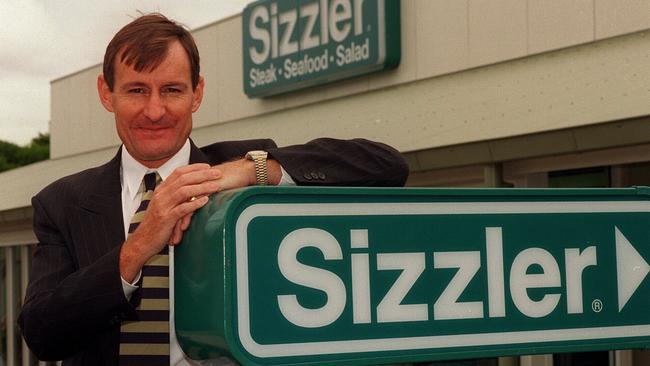
The chain began in 1958 in California when Del and Helen Johnson opened Sizzler Family Steak House “with $50 in the cash register”.
Dozens of Sizzlers remain in the western US and other countries.
But after 35 years in Australia, in 2020 Sizzler closed its last nine restaurants in Queensland, NSW and Western Australia – blaming Covid – after a long, slow death.
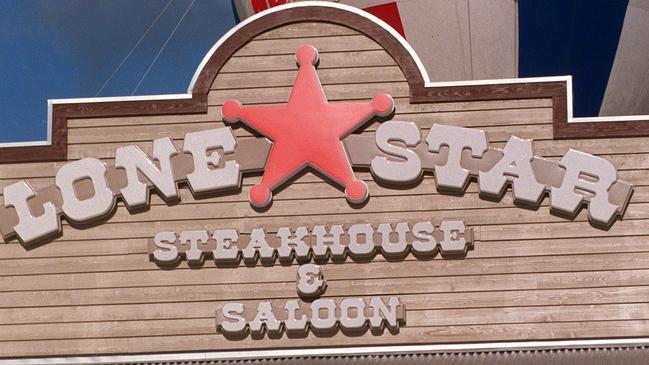
Lone Star Steakhouse and Saloon
If you hazily recall lazily scoffing buckets of free peanuts with shells you could throw on the floor, you were probably at a Lone Star.
This Texan-style saloon-themed franchise flourished in Australia in the 1990s after the first opened in Sydney in 1993, but gradually faded away in the 2000s.
The decor theme was the Texas roadhouse of the late 1800s to early 1900s, with wooden planks on the floor, timber walls, bulls’ heads and flags of Texas on the walls.
Steaks and ribs were traditionally their biggest sellers.
The crew wore denim pants and T-shirts with “Don’t mess with Texas” printed on the back.
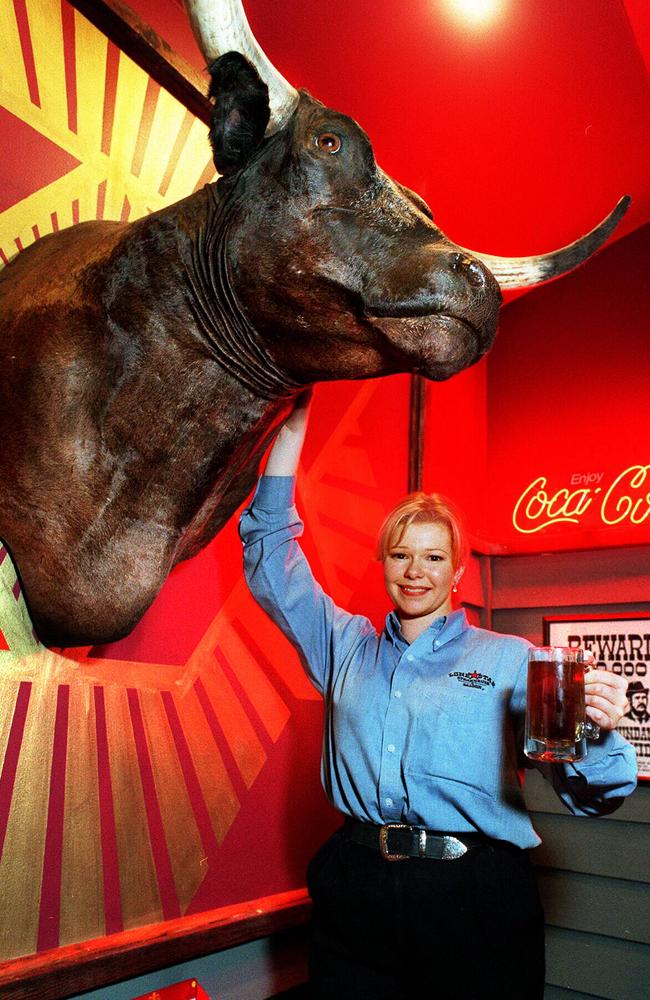
DENNY’S
A family trip to Denny’s for “tea” was a rare treat for ’80s kids growing up in Melbourne’s burbs, complete with “little Aussie burgers”, baskets of garlic bread and mud pie sundaes.
The classic American diner opened its first restaurant in Melbourne in 1982, with the Australian franchise owned by airline Ansett.
As it turned out, neither the Denny’s nor Ansett brand were destined to go the distance.
Denny’s was a fully licensed diner open 24 hours, seven days a week.
By 1988, there were eight Denny’s across Melbourne’s suburbs: Albert Park, Nunawading, Ringwood, Doncaster, Dandenong, Highett, Niddrie and Campbellfield.
There were several more in NSW and Queensland.
But in 1989, a year after trumpeting ambitious expansion plans, Ansett quit the restaurant business and sold off all the sites to English brewing company Whitbread, which converted them into The Keg steak and seafood restaurants.
Denny’s is still popular in the US and elsewhere, with more than 1500 worldwide.
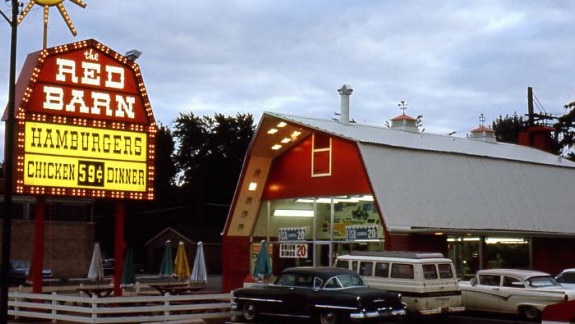
Red Barn
“When the hungries hit, come to the Red Barn,” was the advertising catchcry.
The Red Barn burger chain started in Ohio in the 1960s and was brought to Australia by the Spotless group.
Red Barn was one of a number of similar now-forgotten American fast food chains that tried and failed – others included Beef Ranch, Burger Chef and Church’s Fried Chicken.
But Red Barns have survived better in our memories thanks to the restaurant buildings – cartoonish bright red American barns with western saloon styling.
By the early ’70s, Spotless sold all its Melbourne outlets to McDonald’s as the golden arches began their unstoppable Australian invasion.
Kentucky Fried Chicken had been an early entrant to the fast food landscape in 1968 with their jolly red and white buildings.
But the early 1970s was when fast food outlets really began to take off across Australia’s suburban heartland.
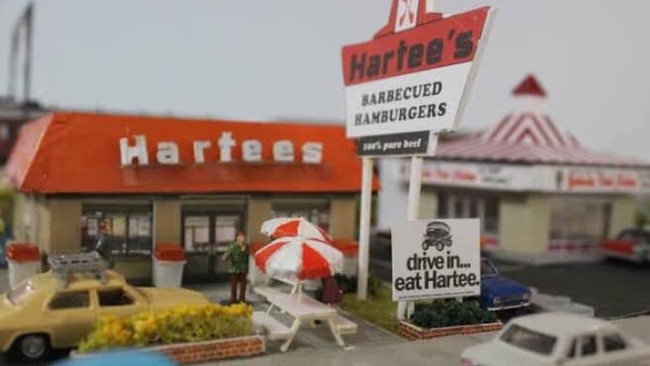
Hartee’s
In the early 1970s, Hartee’s catchy jingle urged Melburnians to “Hurry on down to Hartee’s where the burgers are barbecued”.
By 1975, Hartee’s had outlets in Alphington, Doncaster, Hartwell, Cheltenham, Dandenong and Springvale, with several more in Sydney.
The American breakfast food giant Kellogg’s, separately from its Australian arm, and the US Hardee’s restaurant chain combined to establish Hartee’s, selling burgers and barbecued chicken.
There were grand plans for 100 Australasian stores, but the chain’s 17 outlets in NSW and Victoria were closed abruptly in July 1975 amid revelations of heavy losses, only four years after the first shop opened.
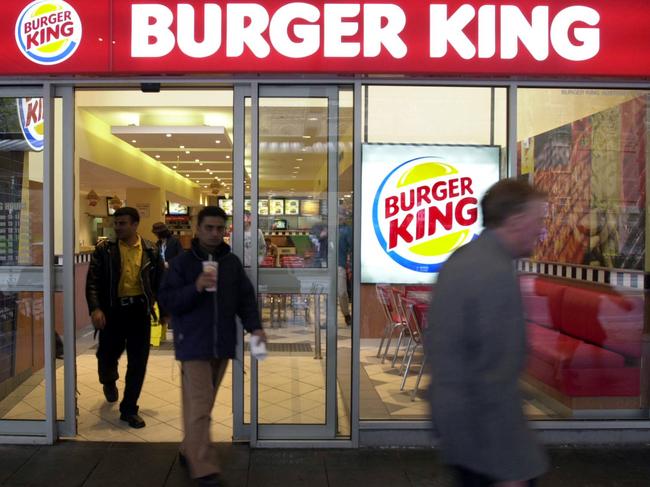
Burger King
Burger King opened its first Australian store in Perth as Hungry Jack’s in April 1971.
(McDonald’s was hot on its heels, following mere months later in Sydney.)
But the story of why you’ll no longer find Burger King outlets, only Hungry Jack’s, is the ultimate David and Goliath story.
When Burger King decided to expand into Australia, it found its business name was already trademarked by a takeaway shop in Adelaide.
So the company gave its own Australian franchisee, Jack Cowin, a few name suggestions and he chose Hungry Jack’s.
But after the Adelaide “Burger King” trademark expired, the US giant began opening its own Burger King branded outlets in competition with Hungry Jack’s.
Jack Cowin took legal action against the US giant and triumphed after a decade-long battle, winning a stunning $45m-plus payout in 2003.
The global fast food behemoth threw in the towel, ceding the Australian market to the Hungry Jack’s brand, and agreeing to convert all its Burger Kings in Australia into Hungry Jack’s.
Now that’s a whopper of a backdown.
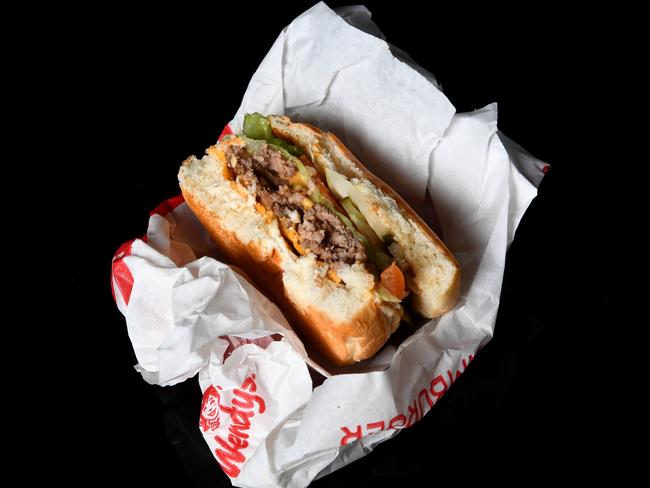
Wendy’s
The US burger giant was popular in Melbourne before vanishing in the 1980s amid a crowded market.
Four decades on, Wendy’s, now the world’s third-largest burger chain after Maccas and Burger King, is having another crack, setting the stage for a re-run of the burger wars.
Some 200 Wendy’s eateries are expected to open across Australia between 2025 and 2034, adding to its 7000 restaurants around the world.
So get set to try Wendy’s famous square patties and Frosty thick shakes.
Ollie’s
Victoria’s tram-themed Ollie’s Trolley, aka Ollie’s Family Restaurants, wasn’t American, but tends to crop up in any discussion about long-lost US fast food chains.
Maybe it’s because they took off at the same time as the US fast food invasion, or because they served similar food, including fried chicken, hot chips and ice cream sundaes.
There’s also an interesting parallel between Australia’s Ollie’s Trolley and an American company of the same name, which opened in 1973 in Kentucky.
The origins of Australia’s Ollie’s Trolley are a little murky, but it’s thought to predate the American version.
Aussie superstars Tina Arena and Shirley Strachan featured in TV ads for Australia’s Ollie’s.
In one 1980s ad, spruiking 10 pieces of fried chicken and large chips for $7.50, Arena sings “At Ollie’s Family Restaurants you’re our guest.”
Ollie’s restaurant locations included Collingwood, Essendon, Frankston, Malvern, Melton, Ringwood, Rosebud and Rye.
But in 1990, KFC took over Australia’s Ollie’s and its 32 locations across Melbourne and country Victoria.
The Keg
Not American but rather Canadian-owned, The Keg took Melbourne by storm in the 1990s when Denny’s closed and all its restaurants were converted into The Keg.

It was a chain of flashy steak and seafood restaurants and bars renowned for their decadent desserts, jovial waiters, crunchy potato skins and cocktails with names that would make your mother blush.

The exterior was ranch-style while the interior decor included natural timbers and colonial bric-a-brac in a cross between American bar and Aussie pub.
While the chain still flourishes in Canada particularly and also the US, it couldn’t make it work in Australia as competition grew and it disappeared some years ago.



